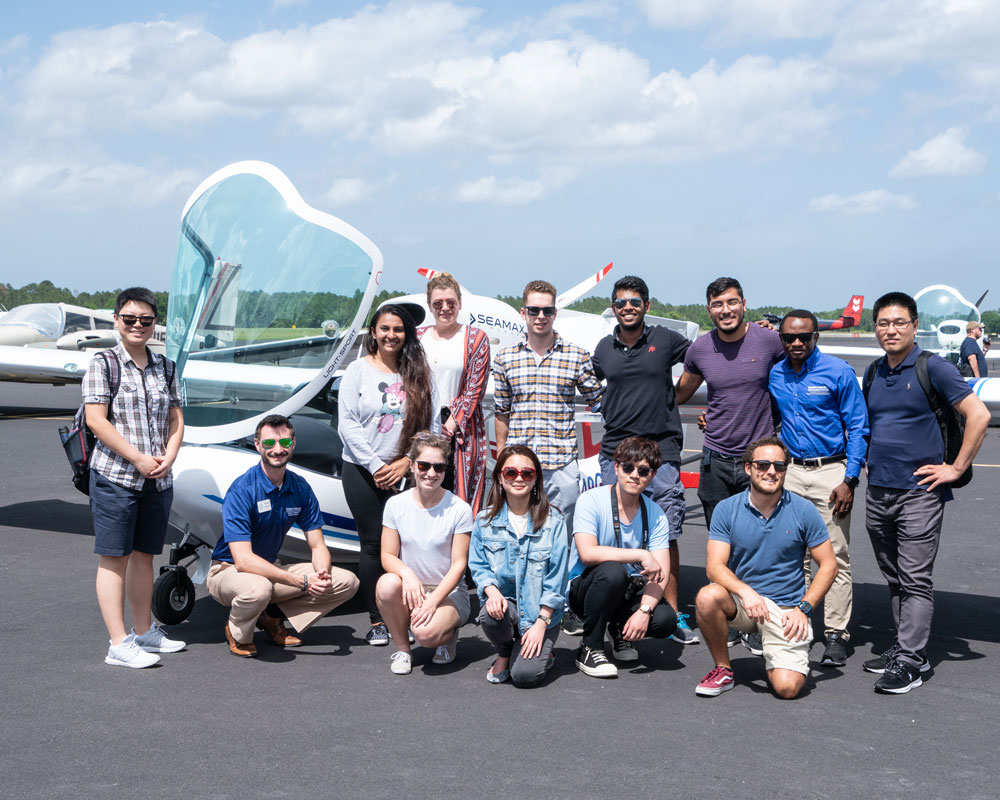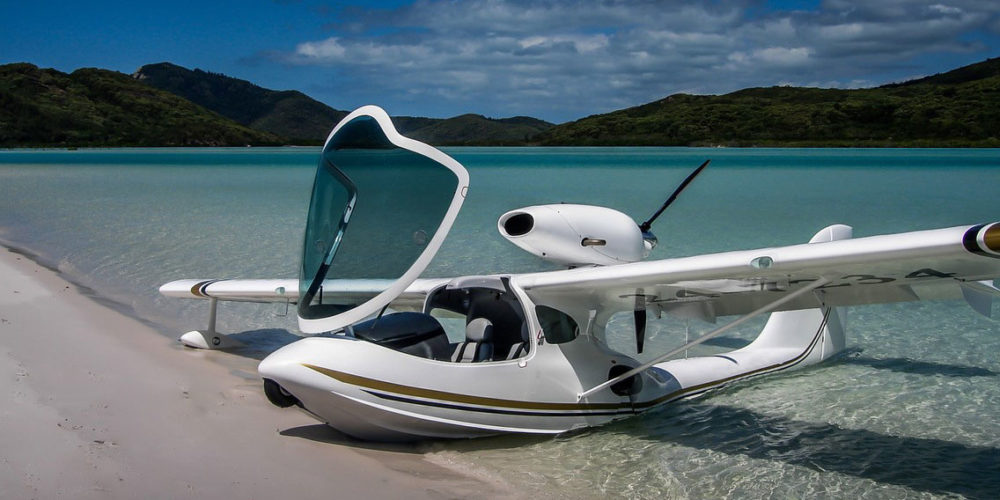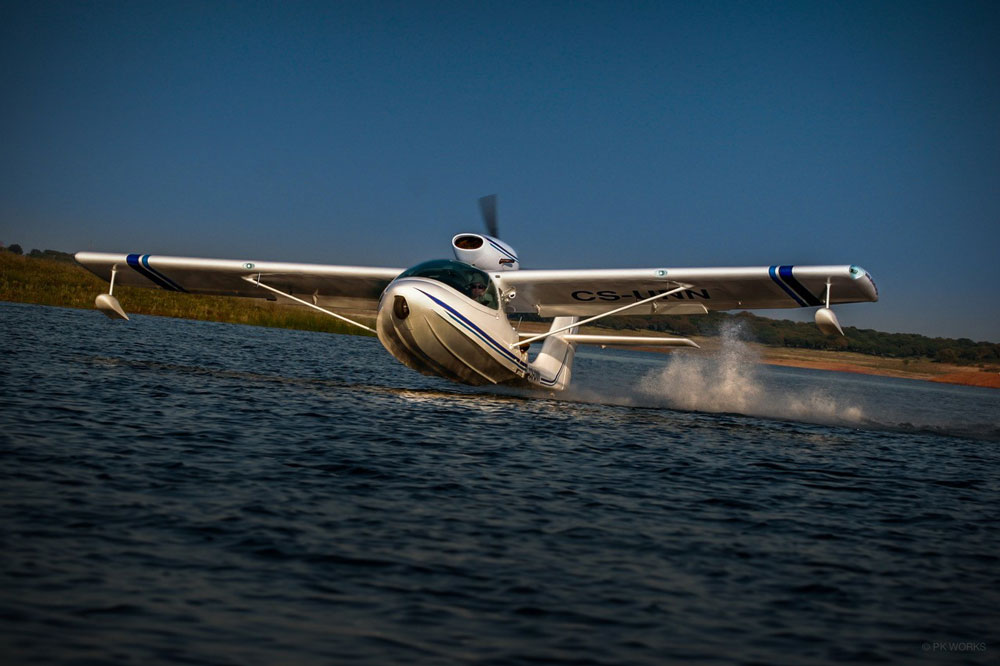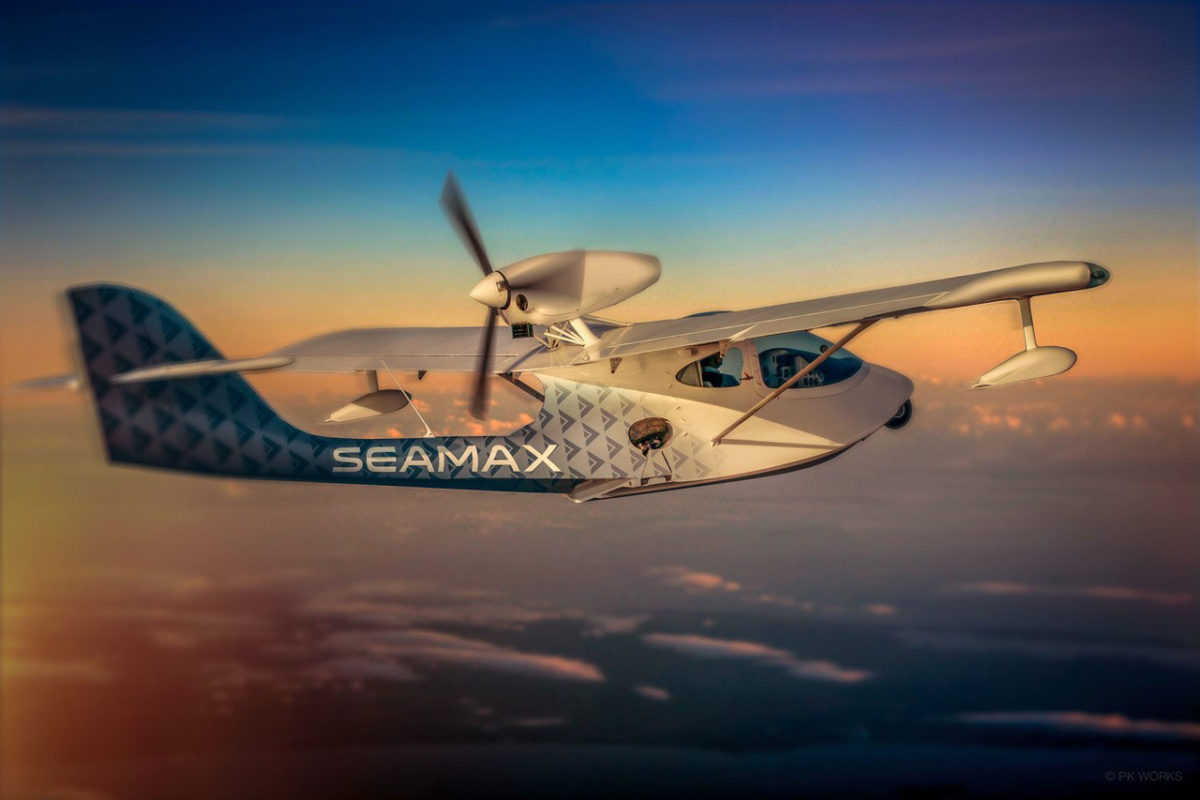The plan is bold and the stakes are high: SeaMax, a light-sport aircraft company based in Brazil, is launching operations in the United States. Known for producing the award-winning M-22, the company is transitioning to an all-composite model: the M-42. The vision, says SeaMax CEO Gilberto Cunha Trivelato, is to market a safe amphibious aircraft, with or without foldable wings, and a computer platform that allows users to load their own applications.
To succeed, the former executive at Mectron Odebrecht and systems engineer at Embraer knew he would need deep insights to the U.S. light-sport aircraft market. For 20 years, Trivelato says, he had dreamed of working with the world’s premier aviation institution, Embry-Riddle. In 2017, he brought the company’s research and development department to Embry-Riddle’s Research Park in Daytona Beach, Florida. He also reached out to the David B. O’Maley College of Business.
In response, Embry-Riddle faculty members Dawna Rhoades, Janet Tinoco and John Longshore (’81, ’84) assigned some 100 students in five different classes to prepare comprehensive business assessments for SeaMax, at no cost to the company. The analyses encompassed the SeaMax business plan for U.S. operations, including project management, competition, customer base, value proposition, supply chain logistics, importing and exporting challenges, and product quality and performance.
If Trivelato’s plan to sell a “flying business platform” with its new M-42 model takes off, it could ultimately create 80 new jobs in Florida, says Shalom Confessor, executive director for the company’s U.S. headquarters. The company is in the advanced stage of prototype development and new technologies testing for the aircraft. “We expect to start test flights by September 2019,” Confessor says. The plan, now, is to do final assembly in the United States and then gradually transfer the entire production to the states, he adds.

Marketing for Sport or Business
Customer service will be a critical selling point as SeaMax ramps up to market an aircraft with customizable software modules to various businesses — from search-and-rescue operations to air taxis, says Longshore, an associate professor of management. The company will also need to look for and leverage product differentiators such as ISO-9000 certification, a set of global standards for quality assurance, adds Longshore, who earned a bachelor’s degree in management and an MBA – Aviation from Embry-Riddle.
Improved manufacturing efficiency is another key goal for SeaMax, which is why the M-42 will be based on composite rather than metal fabrication, says Miguel Rosario, the company’s chief operating officer and head designer. “We’ve developed the molds for the composite manufacturing of a family of aircraft,” Rosario explained. “That will allow us to create a reconfigurable and higher quality product based on new processes, which will be faster than metal fabrication done by hand.”
Rhoades, professor of strategy and chair of the department of management, marketing and operations, says patenting that unique composite manufacturing process will help keep SeaMax a step ahead of its competitors. The company’s M-22 model had a market advantage because it was among the first designs to meet U.S. Federal Aviation Administration (FAA) standards for light-sport aircraft, she notes.
Imagining New Solutions
Nidhi Trambadia (’18), president of the National Association of Women MBAs, was among the army of Embry-Riddle graduate students who dove deep into the SeaMax business plan. In particular, she and her classmates used Lean Six Sigma, a technique for modeling and improving business efficiency and capabilities, to evaluate customer versus company priorities.
Mengyuan Lu (’18), currently an intern with the Airports Council International – North America, says she worked with a dozen students and faculty to analyze the U.S. market environment for light-sport aircraft sales for the project.
“It was valuable work experience for me,” Lu says. “When I was applying for internships, interviewers wanted to know if I had worked on any practical, real-world projects. I was able to say, ‘yes.’”
The SeaMax project helped students develop problem-solving skills, as well as learn how to deal with ambiguity and work with a client, says Tinoco, associate professor of management and marketing: “They didn’t have all of the information sitting right there. They had to be entrepreneurial in seeking out the answers.”
Win-Win
Confessor says the students’ work is already paying dividends for SeaMax. “Their research helped us position the price of the M-22 based on its performance, range and useful load, compared to our competitors; and to better understand the Light-Sport amphibious market demographics in the U.S. and the need to make minor modifications to the aircraft to achieve maximum success.”
For SeaMax, the partnership with Embry-Riddle continues to provide business and technical insight — and critical additional support, especially valuable given Trivelato’s ambitious goal to someday market an unmanned version of his aircraft. “By working together,” Trivelato says, “we can imagine new solutions for the future.”


